HealtH Care

October 2022
4 easy ways to make healthy eating more affordable
Naps: Make the most of them and know when to stop them
1HealtHcare | October 2020
ALASKA





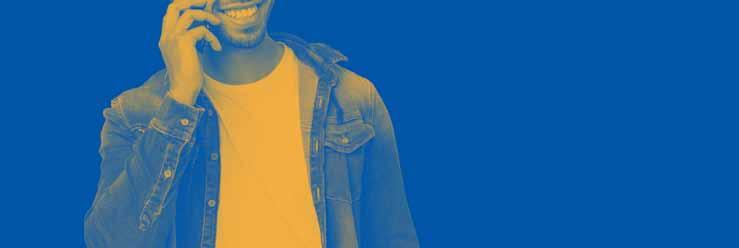
2 October 2022 | alaska HealtH care OPEN ENROLLMENT Enroll in ACA Insurance Apply for Medicaid/Denali KidCare Find Cost Savings If you need health insurance, or your eligibility has changed and you want to understand what you qualify for, we can help. Healthcare Navigators are a free, local service, available to walk you through the health insurance landscape. or TEXT GETCOVEREDAK to 898-211 CALL 2-1-1 OR 1-800-478-2221 UNITED WAY HEALTHCARE NAVIGATORS ARE HERE TO HELP! BEGINS NOVEMBER 1 A UNITED WAY HEALTHCARE NAVIGATOR CAN HELP YOU: This program is supported by the Centers for Medicare and Medicaid Services (CMS) of the U.S. Department of Health and Human Services (HHS) as part of a financial assistance award totaling $1.5 million with 100 percent funded by CMS/HHS. The contents are those of the author(s) and do not necessarily represent the official views of, nor an endorsement, by CMS/HHS, or the U.S. Government.
TaBLe OF CONTeNT
Naps: Make the most of them and know when to stop them pG. 4-5
Tinnitus: Ringing or humming in your ears? sound therapy is one option pG. 6-8
Menopause and memory: Know the facts pG. 10-13

postpartum anxiety is invisible, but common and treatable pG.14-16
Tooth loss truth: It’s no longer about the tooth fairy pG. 18-29
Take steps to combat stress eating pG. 20-21

6 ways to reduce inflammation pG. 22-23
Mayo Clinic Q&a: Understanding genetic abnormalities and cancer risk pG. 24-26


savvy strategies for your health savings account pG. 28-30
4 easy ways to make healthy eating more affordable pG. 32-34
publisher: Andy Pennington editor: Nina Wladkowski ad Director: Eric Groves sales: Josh Chandler, Ryan Estrada, Victoria Hansen, Joleesa Stepetin
Graphic Designer: Jian Bautista Graphics Manager: Michael Oldroyd advertising Operations specialist: Lisa McGuire
This special publication was produced by the advertising department of Anchorage Daily News. The ADN newsroom was not involved in its production.
Come Tour Anchorage’s Premier 55+ Independent Living Community
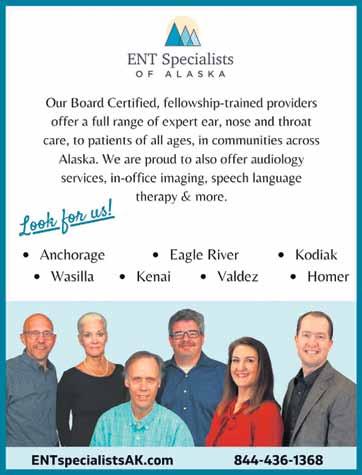
Enjoy Your Retirement! Own your own home in a maintenance free and secure environment! Homes sell quickly Call to schedule a tour
more information or a tour please call:
2020 Muldoon Road
3alaska HealtH care | October 2022
For
907-333-8844 •
www.chesterparkcoop.com
Naps:
Make the Most of theM and know when to stop theM
Claire McCarthy, M.D., Harvard Health Blog, Premium Health News Service
DURING The FIRsT yeaR OF LIFe, Naps aRe CRUCIaL FOR BaBIes, whO sIMpLy CaNNOT sTay awaKe FOR MORe ThaN a COUpLe OF hOURs aT a TIMe, aND CRUCIaL FOR paReNTs aND CaReGIveRs, whO NeeD BReaKs FROM The haRD wORK OF CaRING FOR aN INFaNT.
But as children become toddlers and preschoolers, naps aren’t always straightforward. Children often fight them, following the “you snooze you lose” philosophy, and they can conflict with daily tasks, such as school pick-up when there are older siblings, or lead to late bedtimes.

Here are some tips for making naps work for you and your child — and for knowing when they aren’t needed anymore.
MaKING Naps wORK FOR yOUR BaBy
Most infants will take at least two naps during the day, and early in toddlerhood most children will still take both a morning nap and an afternoon nap. Naps are important not just for physical rest and better moods, but also for learning: Sleep allows us to consolidate new information. As children get older, they usually drop one of the naps, most commonly the morning nap.
Every child is different when it comes to napping. Some need long naps, some do fine with catnaps, some will give up naps earlier than others. Even within the same family, children can be different. A big part of making naps work is listening to and learning about your child’s temperament and needs. Otherwise, you can end up fighting losing battles.
The needs of a parent or caregiver are also important: everyone needs a break. Sometimes those breaks are particularly useful at specific times of the day, like meal prep time. While you can’t always make a child be sleepy at the most convenient time for you, it’s worth a try — which leads to the first tip:
Schedule the naps. Instead of waiting for a child to literally drop and fall asleep, have a regular naptime. We all do better when our sleep routines are regular, even adults. If you can, put the child down awake or partially awake. Learning to fall asleep without a bottle or a breast, or without being held, is a helpful skill for children to learn and can lead to better sleep habits as they grow.
4 October 2022 | alaska HealtH care
a COUpLe OF sCheDULING NOTes:
• If you need a child to fall asleep earlier or later than they seem to do naturally, try to adjust the previous sleep time. For example, if you need an earlier morning nap, wake the child up earlier in the morning. It may not work, but it’s worth a try.
• Naps later in the afternoon often mean that a child won’t be sleepy until later in the evening. That may not be a problem, but for parents who get tired early or need to get up early, it can be. Try to move the nap earlier, or wake the child earlier. If the problematic afternoon nap is in daycare, talk to the daycare provider about moving or shortening it.
Create a space that’s conducive to sleep. Some children can sleep anywhere and through anything, but most do best with a space that is quiet and dark. A white noise machine or even just a fan can also be helpful.

Don’t use screens before naptime or bedtime. The blue light emitted by computers, tablets and phones can wake up the brain and make it harder for children to fall asleep.

wheN Is IT TIMe TO GIve Up Naps?
Most children give up naps between the ages of 3 and 5. If a child can stay up and be pleasant and engaged throughout the afternoon, they are likely ready to stop. Some crankiness in the late afternoon and early evening is okay; you can always just get them to bed earlier.
One way to figure it out, and ease the transition, is to keep having “quiet time” in the afternoon. Have the child go to bed, but don’t insist on sleep; let them look at books or play quietly. If they stay awake, that’s a sign that they are ready to stop. If they fall asleep but then end up staying up very late, that’s another sign that the afternoon nap needs to go.
Whether or not your child naps, having some quiet time without screens every afternoon is a good habit to get into. It gives your child and everyone else a chance to relax and unwind, and sets a placeholder not just for homework but also for general downtime as children grow — and just like naps for babies, downtime for big kids is crucial.

5alaska HealtH care | October 2022
Claire McCarthy, M.D., is senior faculty editor at Harvard Health Publishing.
Virtual College. Actual Nursing. Nightingale.edu
TinniTus: Ringing oR humming in youR eaRs? sound TheRapy is one opTion
ThaT ReCURRING sOUND ThaT yOU heaR BUT NOBODy eLse DOes? IT’s NOT aLL IN yOUR heaD. weLL, NOT exaCTLy.
You may be one of the estimated 50 million-plus people who suffer from tinnitus. The mysterious condition causes a sound in the head with no external source. For many it’s a high-pitched ringing, while for others it’s whistling, whooshing, buzzing, chirping, hissing, humming, roaring or even shrieking.
The sound may seem to come from one ear or both, from inside the head, or from a distance. It may be constant or intermittent, steady or pulsating. One approach to managing this condition is different forms of sound therapy intended to help people tune out the internal soundtrack of tinnitus.
what causes tinnitus?

There are many possible causes of tinnitus. Long-term exposure to loud noises is often blamed. But other sources include middle ear problems like an infection, a tumor or cyst pinching nerves in the ear, or something as simple as earwax buildup. Tinnitus also can be a symptom of Meniere’s disease, a disorder of the balance mechanism in the inner ear.
Even old-fashioned aging can lead to tinnitus, which is common in people older than age 55. As people get older, the auditory nerve connecting the ear to the brain starts to fray, diminishing normal sounds.
“Neurons (nerve cells) in areas of the brain that process sound make up for this loss of input by increasing their sensitivity,” says Daniel Polley, director of the Lauer Tinnitus Research Center at Harvard-affiliated Massachusetts Eye and Ear. “The sensitivity knobs are turned up so high that neurons begin to respond to the activity of other nearby neurons. This creates the perception of a sound that does not exist in the physical environment. It’s a classic example of a feedback loop, similar to the squeal of a microphone when it is too close to a speaker.”
At times, everyone experiences the perception of a phantom sound. If it only lasts for a few seconds or minutes, it’s nothing to worry about. However, if it pulsates in sync with your heart rate, it’s definitely something to get checked out by a physician, says Polley. If it’s a relatively continuous sound, you should see an audiologist or otolaryngologist - an ears, nose and throat specialist.
Matthew Solan, Harvard Health Blog, Premium Health News Service
Continued on pg. 8
Be par t of Southcentral Foundation’s award-winning team!

At Southcentral Foundation, we suppor t ever y employee’s career journey with academic and wellness leave, personal leave, paid holidays, and competitive pay. Begin your career at Southcentral Foundation. • Behavioral Ser vices • Dental Ser vices • Finance • Administrative • Information Technology • Medical Ser vices • Clinical • Technical and Professional Training Programs • And More! Apply today! SCFJobs@southcentr alfoundation.com
Alaska Nati ve People Shaping Health Care
Continued from pg.
Can sound therapy help tune out tinnitus?
There is no cure for tinnitus, but it can become less noticeable over time. Still, there are ways to ease symptoms and help tune out the noise and minimize its impact. Treatments are a trialand-error approach, as they work for some people but n ot others.
One often-suggested strategy is sound therapy. It uses external noise to alter your perception of or reaction to tinnitus. Research suggests sound therapy can effectively suppress tinnitus in some people. Two common types of sound therapy are masking and habituation.
Masking. This exposes a person to background noise, like white noise, nature sounds or ambient sounds, to mask tinnitus noise or distract attention away from it. Listening to sound machines or music through headphones or other devices can offer temporary breaks from the perception of tinnitus. Household items like electric fans, radios and TVs also can help. Many people with tinnitus also have some degree of hearing loss. Hearing aids can be used to mask tinnitus by turning up the volume on outside noises. This works especially well when hearing loss and tinnitus occur within the same frequency range, according to the American Tinnitus Association.
Habituation. Also known as tinnitus retraining therapy, this process trains your brain to become more accustomed to tinnitus. Here, you listen to noise similar to your tinnitus sound for long periods. Eventually your brain ignores the tone, along with the tinnitus sound. It’s similar to how you eventually don’t think about how glasses feel on your nose. The therapy is done with guidance from a specialist and the time frame varies per person, usually anywhere from 12 to 24 months.
additional approaches may help with tinnitus
Depending on your diagnosis, your doctor also may recommend addressing issues that could contribute to your tinnitus.
Musculoskeletal factors. Jaw clenching, tooth grinding, prior injury or muscle tension in the neck can sometimes make tinnitus more noticeable. If tight muscles are part of the problem, massage therapy may help relieve it. Underlying health conditions. You may be able to reduce the impact of tinnitus by treating conditions like depression, anxiety and insomnia.
Negative thinking. Adopting cognitive behavioral therapy and hypnosis to redirect negative thoughts and emotions linked to tinnitus may also help ease symptoms. Medication. Tinnitus can be a side effect of many medications, especially when taken at higher doses, like aspirin and other nonsteroidal anti-inflammatory drugs and certain antidepressants. The problem often goes away when the drug is reduced or discontinued.
Matthew Solan is executive editor at Harvard Men’s Health Watch.
8 October 2022 | alaska HealtH care
6
You brin the best
Alaska ’s most aw
Providence Alaska Medical Cente provider in Alaska. U.S. News & W has named Providence Alaska Med categories including hear t attack


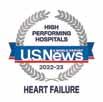






Thanks to the great work of all ou enabling us to ser ve our commun
Learn more at Providence org/PAMCawards
Providence Alaska Medic al Center, a nationally recognized trauma center and Alaska ’ s only Magnet hospital, is par t of Providence S t. Joseph Health, a not for profit net work of hospitals, c are center s, health plans, physicians, clinics, home health ser vices, af filiated ser vices and educ ational facilities For more information about PAMC, visit alaska providence org
9alaska HealtH care | October 2022
menopause & memoRy: Know The facTs
 Jill M. Goldstein, Ph.d., harvard health BloG, PreMiuM health news service
Jill M. Goldstein, Ph.d., harvard health BloG, PreMiuM health news service
By 2050, 13.8 MILLION peOpLe IN The U.s. wILL LIKeLy have aLzheIMeR’s DIsease, aND TwOThIRDs wILL Be wOMeN. The economic cost is staggering, as it is estimated to rise to more than $2 trillion. women are at the epicenter of this because the economic threat is especially dire for women, given they are an increasingly powerful element of our global economy and the vast majority of unpaid caregivers. Thus, maintaining intact memory starting early in midlife with the transition to menopause is critical not only for women themselves, but also for their families, society and our economic health.
pReveNTING MeMORy DeCLINe sTaRTs IN eaRLy MIDLIFe
The decline in cognitive ability is not limited to neurodegenerative diseases like Alzheimer’s disease (AD), but also part of healthy aging, with consequences for our quality of life. Most studies of aging and cognitive decline, particularly studies of AD, begin in people in their 70s. However, understanding factors that happen earlier in life, and how they impact age-related brain changes, is critical for developing prevention strategies for one of the major public health challenges of our time.
10 October 2022 | alaska HealtH care
Continued on pg. 12
Mended Hearts-Anchorage (Chapter
has been active in

Mended Hearts Inc. is the largest cardiovascular peer-to-peer support network in the world. We are a nonprofit organization offering the gift of hope to cardiovascular patients, their caregivers, and families for over 70 years! Since its humble beginning in 1951 (founded by cardiac surgery pioneer Dr Dwight Harken) Mended Hearts has served millions by providing support and education, bringing awareness to issues that those living with heart disease face, and advocating to improve quality of life across their lifespan. Mended Hearts also offers a program for children with heart defects known as Mended Little Hearts.
for

years
Thousands of Alaskans are living with cardiovascular disease. Many go undiagnosed until a medical emergency occurs. They and their caregivers and loved ones face many emotional and physical challenges during recover y Our Mended Hearts volunteers provide encouragement, educational information, and peer-to-peer emotional, social, and practical support to them from diagnosis through recover y. Because we are heart patients as well, we understand that adjusting to life after a heart event is challenging. Heart disease is complex, and few patients and their caregivers experience it the same way There may be appointments to track, new medications to take, lifestyle changes to make, and many other issues to consider However, you are not alone on this jour ney Mended Hearts-Anchorage is. a dedicated group of volunteers whose mission is to provide support and encouragement to you, your caregiver and family I invite you to lear n more about our local chapter at www alaskamendedhearts.org and www.mendedhearts.org.
We invite you to join Mended Hearts-Anchorage and become part of a close-knit group that is focused on providing morale support for those with heart disease in our community.




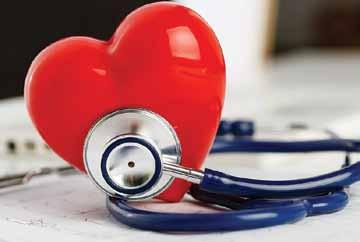
Joining Mended Hearts connects you instantly to patients and caregivers just like you who understand the needs of cardiovascular disease patients. The Mended Hearts program provide counseling and emotional support at the hospital bedside, one-to-one support after discharge, plus a variety of helpful support group meetings, educational materials, online events, and social activities.
You can join the nation’s largest cardiovascular disease support network today and be part of our caring support network. Free memberships are available, and we welcome all. If you join at a donation level, you will get some gifts from Mended Hearts and Mended Little Hearts. Membership levels and gifts are shown here.

11alaska HealtH care | October 2022
290)
Anchorage Alaska
20+
Presenting ARC of Anchorage (CEO) with a new AED
HELP US FIGHT HEART DISEASE IN OUR COMMUNITY! ■ BECOME A MEMBER OF MENDED HEARTS-ANCHORAGE, CHAPTER 290! ■ DONATE TO PICK.CLICK.GIVE. ■ (MENDED HEARTS INC) ■ PARTICIPATE IN THE MENDED HEARTS ANNUAL CHARITY GOLF TOURNAMENT ■ PRIZES GALORE! /Chance to win TWO TICKETS TO THE MASTERS 2024 Tour nament; Win $25K CASH (Hole -In-One)
from pg. 10

whaT happeNs TO wOMeN’s BRaINs ThROUGh The TRaNsITION INTO MeNOpaUse?
In addition to chronological aging, women undergo reproductive aging in early midlife: menopause, during which they experience a depletion over time of ovarian hormones such as estradiol, the primary form of estrogen that works in the brain. Our research team and others have demonstrated that estradiol directly relates to changes in memory performance and reorganization of our brain circuitry that regulates memory function. Thus, women and men undergo different aging processes, especially in early midlife when reproductive aging is more critical for women than chronological aging. However, cognitive aging is rarely considered a women’s health issue. This is essential, because viewing brain aging as beginning in early midlife, and understanding the impact of menopause on the brain, will allow for development of strategies to prevent memory loss for women.
On average, women perform better than men on measures of verbal memory, beginning as early as post-puberty. However, women’s advantage for verbal memory performance is reduced with menopause. Many women report increased forgetfulness and “brain fog” during the menopausal transition. All women eventually undergo menopause, but there is a large age range for when it begins — from late 40s to early 60s — and substantial variation in women’s experience of its impact.
Over the last 15 years, an increasing number of studies are mapping out the intricate ways in which menopause affects the brain and what helps maintain intact memory. For example, menopause can affect how brain cells are generated, connect with each other and even die, and these processes impact brain regions that are critical for memory. Menopause also lowers the level of glucose in the brain, the primary fuel used by brain cells. The brain then looks to other metabolic sources to provide the necessary fuel to function — that is, the brain adapts to a new hormonal environment in order to maintain functioning.
12 October 2022 | alaska HealtH care
Continued
Further, women with other medical conditions like diabetes and hypertension are at increased risk for cognitive decline. Research into understanding this is focusing, in part, on how the brain and body share similar processes to produce energy to function — metabolism — and how blood pressure and other aspects of the vascular system function similarly in the brain and body.
CaN hORMONe RepLaCeMeNT TReaTMeNT heLp?
Research shows that timing matters. Initiation of hormone replacement (HR) in perimenopause, roughly four to eight years before menopause, or early menopause may have positive effects on brain activity and memory function, although systematic HR trials have not been conducted during perimenopause. Initiation of HR in late menopause may have adverse effects on the brain, and increase risk of disorders like Alzheimer’s disease. Research is critically needed to establish the most effective timing of administration, hormonal formula, dose, route of administration, for example, orally or by skin patch, and duration.
Further, to date much of the HR research has been conducted in healthy women, and little is known about its impact in women with chronic diseases such as diabetes and hypertension. Finally, there may be differences in responses in women who are genetically at high risk for brain disorders, like AD, that show increased benefits for using HR. Research shows us that one size does not fit all, and precision medicine is needed to identify which women may benefit the most. One example is for women with bilateral removal of the ovaries, particularly at a young age, for whom HR has been found to be very beneficial for brain function. In some women HR may not be an option, and alternative mechanisms may need to be identified, such as targeting levels of glucose and other effects associated with estradiol regulation of the brain.
whaT CaN wOMeN DO TO MaINTaIN BRaIN heaLTh?
There are three major pillars for maintaining intact memory: effortful physical activity, effortful cognitive activity, and social contact. Research shows that the first two of these have direct beneficial effects on the brain, even at the level of cellular function. Social contact is another form of keeping our brains active by external stimuli, novel experiences, and perspectives outside of ourselves. Dietary habits, such as the Mediterranean diet, or intake of omega-3 fatty acids like in fish oil, have also had beneficial effects on memory function. The good news is that these are modifiable lifestyle habits, which may be particularly important for women with hypertension or diabetes who are at higher risk for cognitive decline.
Finally, adequate sleep, currently suggested as seven hours a night, is critical for brain health. Research has shown that during certain periods of sleep, learning is consolidated; that is, sleep plays a key role in storing and maintaining what we learned during the day, and even helps in clearing the brain of amyloid, one of the markers of potential AD pathology. More research is required to fully understand the beneficial impacts of these modifiable lifestyle factors. However, the time to start incorporating them into your life is now.
Jill M. Goldstein, Ph.D., is a contributor to Harvard Health Publications.
13alaska HealtH care | October 2022
PostPartum anxiety is invisible, but common and treatable
Stephanie Collier, M.D., MPH, Harvard Health Blog, Premium Health News Service
The wait is finally over: After 40 weeks of medical appointments, nursery planning and anticipation, your baby has finally arrived. They are perfect in your eyes, healthy and adorable. Yet over the next few weeks, your initial joy is replaced by all-consuming worries: Are they feeding enough? Why are they crying so often? Is something medically wrong with them?
These worries are constant during the day and keep you up at night. You feel tense and irritable, your heart races and you feel panicky. Your family members start to express their concern — not just about the baby, but about you. You wonder whether your anxiety is normal.
Baby blues, postpartum depression or postpartum anxiety?
Chances are, you have heard about the baby blues or postpartum depression. You may have even filled out questionnaires about your mood during your postpartum doctor’s visit. The baby blues are a very common reaction to decreasing hormone levels after delivery, and may leave you feeling sad,
14 October 2022 | alaska HealtH care
weepy and overwhelmed. However, these symptoms are mild and only last for a couple of weeks. When the symptoms persist and become debilitating, something else could be going on.



Many symptoms overlap between postpartum depression and postpartum anxiety, such as poor sleep, trouble relaxing and irritability. Mothers experiencing postpartum depression commonly experience symptoms of anxiety, although not all mothers suffering from anxiety are depressed. Establishing the correct diagnosis is important, as women with postpartum anxiety may not respond as well to certain treatments for depression, such as interpersonal psychotherapy or medications such as bupropion (Wellbutrin).
Similar to postpartum depression, postpartum anxiety may spike due to hormonal changes in the postpartum period. It may also increase as a response to real stressors — whether it’s the health of the baby, finances, or in response to navigating new roles in your relationships. A history of pregnancy loss also increases your risk for developing postpartum anxiety. If you have a history
of anxiety before or during pregnancy, postpartum anxiety symptoms may also return after delivery. Anxiety and sadness may also appear after weaning from breastfeeding due to hormonal changes.
Some women experience panic attacks or symptoms of obsessive-compulsive disorder (OCD) in the postpartum period. Panic attacks are distinct episodes of intense anxiety accompanied by physical symptoms including a rapidly beating heart, feelings of doom, shortness of breath and dizziness. Obsessions are intrusive, unwanted thoughts and may be accompanied by compulsions, or purposeful behaviors to relieve distress. These symptoms may be frightening to a new mother, especially when these thoughts involve harming the baby. Fortunately, when obsessions are due to an anxiety disorder, mothers are extremely unlikely to harm their babies.



what are the treatments for postpartum anxiety?
In general, postpartum anxiety is less studied than its cousin postpartum depression; however, it is estimated that at least one in five women has postpartum anxiety. We do know that therapies

15alaska HealtH care | October 2022
720 E 9th Avenue, Anchorage (907) 244-3550 5515 E Fireweed Road, Palmer (907) 373-4050 wheelchair accessible vans and trucks scooters | ramps | lifts | hand controls | transfer seats www.alaskamobility.com SALES SERVICE RENTALS.alaskamobility 2020 Chrysler Voyager L Pride Wrangler® Continued on pg. 16
such as cognitive behavioral therapy are excellent treatments for anxiety disorders, including OCD.
For some women, medications can be helpful and are more effective when combined with therapy. Selective serotonin reuptake inhibitors (SSRI) are generally the first-line medications — and the best studied medication class — for anxiety disorders, whereas benzodiazepines are rapidly acting antianxiety medications that are often used while waiting for an SSRI to take effect.
should you take medications when breastfeeding?
Breastfeeding provides many benefits to the baby: it’s the perfect nutrition, it helps build a baby’s immune system, it may help prevent adulthood obesity and it provides comfort and security. Breastfeeding also provides benefits for the mother: it releases prolactin and oxytocin — the love and cuddle hormones — which help a mother bond with her baby and provide a sense of relaxation. When considering whether to start a medication, it is important to be aware that all psychiatric medications are excreted into the breast milk. Your doctor can help you think through the risks and benefits of medications based on the severity of your illness, medication preference and previous response, as well as factors unique to your baby, such as medical illness or prematurity.
what non-medication strategies are helpful in decreasing postpartum anxiety?
•
Cuddle your baby — a lot. This releases oxytocin, which can lower anxiety levels.
• Try to maximize sleep. Although the baby may wake you every three hours, or 45 minutes, to feed, your partner should not. Sleeping in separate rooms or taking shifts caring for the baby may be necessary during the first few months. Aim for at least one uninterrupted four-hour stretch of sleep, and be mindful about caffeine intake.
• Spend time with other mothers. Although you may feel like you don’t have the time, connecting with other mothers, even online, can do wonders in lowering your fears and validating your emotions. Chances are you are not the only one worrying up a storm.
• Increase your physical activity. In spite of the physical toll that pregnancy, delivery and milk production take on your body, physical activity is one of the most powerful anti-anxiety strategies. Activities that incorporate breathing exercises, such as yoga, may be particularly helpful.
• Wean gradually. If you are breastfeeding and make the decision to wean, try to do so gently, when possible, to minimize sudden hormonal changes.
• Ask for help. Caring for a baby often requires a village. If you are feeding the baby, ask someone else to help with household chores. There is an old saying “sleep when the baby sleeps.” You may prefer “do laundry when the baby does laundry.”
And finally, give yourself a break — after all, you just had a baby. Postpartum anxiety is common, and in many cases, it will pass with time.
Stephanie Collier, M.D., MPH, is a contributor to Harvard Health Publications.
16 October 2022 | alaska HealtH care
Continued from pg. 15




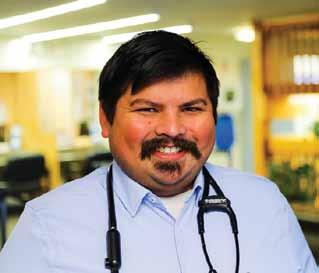
17alaska HealtH care | October 2022 mpfcak .com 907.279.8486 Caring for Alaskans for almost 50 years! Medical Park is growing! We are excited to introduce and welcome Julie Sweetin, FNP and Daniel Mejia, MD to our provider family. Thank you Alaska for trusting Medical Park for your family’s primary care needs from newborns to elderly for over 50 years!
TOOTH LOSS TRUTH:
It’s no longer about the tooth fairy
Tien Jiang, DMD, MEd, Harvard Health Blog, Premium Health News Service
WHEN YOU HEAR THE PHRASE TOOTH LOSS, WHAT COMES TO MIND FIRST? TRAUMA? TOOTH DECAY? THE TOOTH FAIRY? WHILE ALL OF THESE ARE ACCEPTABLE ASSOCIATIONS, THERE ARE MANY MORE FACTORS INVOLVED IN TOOTH LOSS. FROM A POPULATION PERSPECTIVE, OLDER AMERICANS ARE kEEPING THEIR TEETH LONGER, ACCORDING TO A 2016 STUDY. IN FACT, COMPLETE TOOTH LOSS HAS DECREASED BY MORE THAN 75% IN ADULTS 65 TO 75 YEARS OLD OVER THE PAST FIVE DECADES.
However, keeping your teeth longer also means caring for them longer. This study also showed that the prevalence of complete or severe tooth loss is higher among individuals with chronic diseases or overall worse health, compared to those without these conditions. Given that six in 10 adults in the U.S. have a chronic disease, tooth loss is an important topic to discuss. Let’s break down an example of how chronic disease relates to tooth loss, what else influences tooth loss, and ways to prevent it.
PERIODONTITIS
Periodontitis is one of the leading causes of tooth loss. Bacteria, plaque and tartar buildup on teeth can cause inflammation and infection that can spread below the gum and lead to loss of bone and teeth, if severe. It is very common, as about 70% of adults 65 and older and 47% of adults 30 and older have some form of periodontal disease. Over the years, research has shown that certain factors, including chronic diseases, increase risk for periodontal disease. For example, diabetes, which impacts one in 10 Americans, has a bidirectional relationship with periodontal disease, where controlled periodontal disease can help control blood sugar levels and vice versa.

TOOTH DECAY
Tooth decay, or caries/cavities, is another leading cause of tooth loss. Like periodontal disease, tooth decay is caused by bacteria in your mouth. These bacteria build up in sticky plaque on your teeth and feed on sugars in your diet. As a result, they release acids that break down your teeth. If left untreated, the decay can destroy large portions of your teeth, leading to pain, tooth fracture and, if severe, tooth loss.
TRAUMA
While periodontitis and tooth decay are highly preventable, accidents happen. Whether it’s sports or chewing hard food, teeth can be knocked out or break. In either scenario, it is critical to know how to manage dental emergencies and see your dentist immediately. If a tooth is knocked out, remember these dos and don’ts from the American Association of Endodontics:
DO
• Reposition the tooth in the socket immediately. If it can’t be replaced, put it in milk, in your mouth next to your cheek or in an emergency tooth preservation kit.
• See an endodontist or dentist within 30 minutes of the injury, if possible.
DON’T
• Don’t touch the root.
• Don’t rinse the tooth with any soap or chemicals.
• Don’t wrap the tooth in a tissue or cloth.
18 October 2022 | alaska HealtH care
If your tooth breaks but isn’t knocked out, call to consult your dentist and schedule an appointment immediately. keep the area clean by rinsing with warm water, especially if your gums are sore. If there are any sharp edges of the tooth, dental wax is available at most drugstores.
SOCIAL DETERMINANTS OF HEALTH AND TOOTH LOSS
A study led by investigators at the Harvard School of Dental Medicine suggested that “machine-learning algorithm models incorporating socioeconomic characteristics were better at predicting tooth loss than those relying on routine clinical dental indicators alone.”
Furthermore, new research reported that


• adults living in urban areas visited the dentist more than those in rural areas
• women were more likely than men to visit the dentist in both rural and urban areas

• the number of adult dental visits increased as family income increased
• non-Hispanic white adults were more likely than Hispanic and non-Hispanic black adults to have a dental visit in urban areas.
Therefore, it is important to consider how disparities in access to and use of dental care impact not only tooth loss but also oral and overall health.
PREVENTION AND ORAL HEALTH IN THE AGE OF THE PANDEMIC
Tooth loss is not just about losing a tooth. It can significantly impact your quality of life, from affecting speech and self-esteem to restricting your diet — which can lead to either weight loss or obesity. Furthermore, the COVID-19 pandemic led to an increase in stress-related oral health conditions like teeth grinding and cracked or chipped teeth.
While the cause of tooth loss can be related to many things, it is largely preventable. You can avoid pain and losing your teeth with a few simple steps at home focused on limiting the amount of bacteria in your mouth and seeing your dentist regularly.
Lastly, while there may be concerns about returning to normal life, Americans should feel comfort in knowing that dental offices have remained safe, likely due to the fact that dentistry has been a leader in infection control even before COVID-19.
Tien Jiang, DMD, MEd, is a contributor to Harvard Health Publications.
19alaska HealtH care | October 2022
CONVENIENT MIDTOWN LOCATION SATURDAYS & EVENING HOURS 907-770-6652 makareyecare.com Optometric Physicians: Dr Danger, Dr Lane, Dr Rivera-Garcia, Dr Bethany Becker Dr B Makar, Dr T Makar, Dr Habermann, Dr. Clark, Dr. Wentzien, and Dr. Lonsberry THANK YOU ALASKA FOR VOTING US PLATINUM Alaska’s Best Optometrist Since 2009 IT IS AN HONOR CARING FOR YOUR EYES New patients welcome! • 2021 •
TAKE STEPS TO COMBAT STRESS EATING
I definitely eat more of the wrong foods when stressed. What’s the reason and what can I try to combat it?
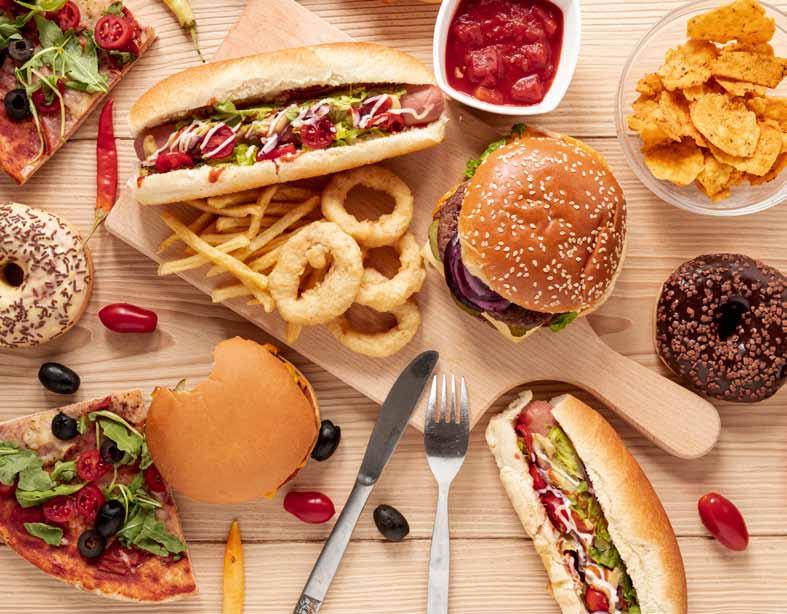
20 October 2022 | alaska HealtH care
Howard LeWine, M.D., Harvard Health Publishing, Premium Health News Service
Stress drives up levels of a hormone called cortisol in the blood. Cortisol is a hormone produced by the adrenal gland that helps to regulate your metabolism. When levels of cortisol rise, it sends blood sugar levels higher and spurs the body to start stockpiling fat.
Stress might also disrupt sleep and drive people to seek out food when they wouldn’t normally — such as in the middle of the night.

In earlier times this biological reaction to stress may have been beneficial, helping the body store up fuel for tough times ahead. But today, there’s typically no famine to outlast, no bear to outrun. Consequently, stress may just lead to unhealthy weight gain.
While stress is an inevitable part of life for many people, the weight gain that can accompany it isn’t.
Changing your response to stress and adopting strategies to reduce it can keep the numbers on your scale from moving in the wrong direction.
These five strategies may help:
1. BURN OFF TeNsION. Exercise is a crucial component of stress management, because physical activity can actually reduce basal cortisol levels. Finding an activity you love can help you maintain the regular physical activity you need in order to dissolve daily stress.
2. pRIORITIze sLeep. A lack of sleep can increase the amount of stress hormones circulating in your body. So ensuring you get enough restful slumber is crucial to managing stress effectively. Avoid screen time at least an hour prior to bedtime. This includes your smartphone. The blue light emitted by smartphones can interfere with sleep.
3. ChaNGe yOUR OUTLOOK. The amount of stress you feel is based on circumstances and your perception of those circumstances. Two people may do the same job, yet only one perceives it as stressful. People also vary in their ability to manage stress, based on personality or early life experiences. Working to change the way you think about challenges can help reduce stress.
4. pLaN aheaD. If you are entering a high-stress period, prepare by setting up supports. If you’re getting ready for a stressful event or facing a work deadline, seek out additional support to help you through. This might include adjusting your schedule to add extra exercise, or making a healthy eating plan to help you resist the impulse to snack on unhealthy food.
5. TaLK TO yOUR DOCTOR. If you’re having problems coping with stress or controlling emotional eating, talk to your primary care physician. They may be able to refer you to a health coach, support services or an obesity specialist.
Howard LeWine, M.D., is an internist at Brigham and Women’s Hospital in Boston and assistant professor at Harvard Medical School. For additional consumer health information, please visit www.health.harvard.edu.
21alaska HealtH care | October 2022
waYs to reduce inflaMMation
 Christine Yu, EatingWell.com, Premium Health News Service
Christine Yu, EatingWell.com, Premium Health News Service
Inflammation is part of your body’s natural defenses — when a cut swells up and turns red, that’s inflammation at work healing you. But when inflammation goes into overdrive, sparked by factors like poor diet and smoking, it can cause a host of health problems including cardiovascular disease, diabetes, arthritis, cancer and even depression. But how can you reduce inflammation in the body? Try these strategies.
1. TRy TURMeRIC.
Turmeric is having a moment, thanks largely to curcumin — a compound that gives the sunny spice its anti-inflammatory powers. According to a recent review, curcumin reduces the production of a protein that makes your immune system work overtime. These studies used high doses of curcumin (up to 1,500 milligrams/day), so it may be worth asking your doctor about supplements. You may not be able to get that much
from food (5 teaspoons ground turmeric or 2 ounces fresh has 500 mg of curcumin). But the spice’s anti-inflammatory potential is still a good reason to sprinkle it liberally on roasted veggies or sip those trendy golden lattes.
2. eaT yOUR ReDs, BLUes aND pURpLes TOO.
Speaking of color, green isn’t the only one that’s good for you. Women who regularly consume roughly 40 mg per day of anthocyanins — the compounds that give produce their deep red and purple hues — have 18% lower levels of C-reactive protein, a measure of inflammatory activity, compared to those who eat minimal amounts of them, U.k. researchers found.
22 October 2022 | alaska HealtH care
3. GRaB a haNDFUL OF NUTs
People who noshed at least five 1-ounce servings of peanuts, almonds, walnuts or cashews each week had lower levels of inflammatory biomarkers compared to those who didn’t eat them regularly, found a study in the American Journal of Clinical Nutrition. Nuts’ anti-inflammatory effects are due to their combo of fiber, antioxidants and omega-3 and omega-6 fatty acids.
4. GeT MORe exeRCIse.
Obesity — or even just an expanding waistline — is a major cause of inflammation. But you can offset this by amping up your activity. A study published in Medicine & Science in Sport & Exercise found that the least-sedentary people had the lowest inflammation, even if they didn’t lose weight. While they got about 2 1/2 hours of moderate-to-vigorous activity per day, it included regular life activities like yard work and household chores. Yes, running around your house scooping up Legos counts! Even a small increase in activity tames the flames compared to being totally couch-bound.
5. GeT eNOUGh sLeep.
It may be more than just a lack of sleep that causes inflammation. How you behave when you’re tired may be what’s stoking the flames. In a study from The Ohio State
University, inflammation shot up when sleep-deprived couples started squabbling. When faced with a conflict, partners’ inflammatory markers jumped 6% for every hour of sleep they lost below seven hours. Inadequate rest may make you more sensitive to stress, which in turn causes inflammation. The good news: Using healthy conflictresolution strategies protected both partners.

6. DRINK GReeN Tea.
Even if coffee is your beverage of choice, you might not want to bag tea altogether — especially the green variety. Green tea is full of potent antioxidants that can help quell inflammation. In fact, researchers from Texas Tech University Health Sciences Center in Lubbock found that green tea can inhibit oxidative stress and the potential inflammation that may result from it. “After 24 weeks, people who consumed 500 mg of green tea polyphenols daily — that’s about 4 to 6 cups of tea — halved their oxidative stress levels,” says Leslie Shen, Ph.D., the study’s lead author.

EatingWell is a magazine and website devoted to healthy eating as a way of life. Online at www.eatingwell.com.

HOLISTIC CARE UNDER ONE ROOF

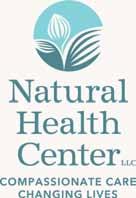





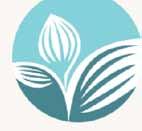


HERBAL APOTHECARY FOR OUR PATIENTS: H E R B A L & N U T R I T I O N A L S U P P L E M E N T S C H I N E S E M E D I C I N A L F O R M U L A S H O M E O P A T H I C R E M E D I E S T I N C T U R E S H E R B A L T E A S
N
a t u r a l h e a l t h c a r e f o r t h e w h o l e f a m i l y W e w e l c o m e a n d c a r e f o r p a t i e n t s o f a l l a g e s , s t a g e s , a n d i d e n t i t i e s f r o m p r e n a t a l t h r o u g h s e n i o r c a r e
A C U P U N C T U R E C H I R O P R A C T I C N A T U R O P A T H Y M A S S A G E T R I G G E R P O I N T T H E R A P Y R O L F I N G F U N C T I O N A L M E D I C I N E
nhcak.com
23alaska HealtH care | October 2022
Mayo CliniC Q&A:
Understanding genetiC abnorMalities and C an Cer risk
DeaR MayO CLINIC:
My mom was diagnosed with breast cancer. During her care, she was found to have a BRCA2 mutation. Her doctor suggested that my brothers and I get tested for this mutation too. I am a 26-year-old woman, and I am not sure what this means for me and my risk of cancer.
24 October 2022 | alaska HealtH care
Casey Swanson, Tribune Content Agency, Premium Health News Service
aNsweR: Having a loved one with a breast cancer diagnosis can be scary. It also can become confusing when you start to hear about genetic mutations. The good news is that the information can help guide your family regarding screening and future cancer risk.
BRCA2 is a genetic abnormality that can be passed down from a parent to children. It is autosomal dominant, which means there is a 50% chance that each of your mom’s biological children could have the mutation. Being positive for the mutation would mean that you or your brothers may be at increased risk of developing certain cancers, compared to the general population.
In addition to breast cancer, these cancers are also known to be associated with BRCA2: ovarian cancer, melanoma, prostate cancer and pancreatic cancer.
To understand your risk, you would want to meet with a genetic counselor who can help you understand the implications of undergoing genetic testing and whether this is something you want to do. Typically, genetic testing is performed using a blood or saliva sample. The counselor would review the results with you and, if you are positive, recommend next steps to learn more about personalized screening and specific risk reduction options.
Generally speaking, it is recommended that women who have a BRCA2 mutation begin monthly breast self-examinations, beginning at 18. Clinical breast examinations are recommended every six months, beginning at 25, or before if there is an earlier breast cancer in the family. Annual breast MRIs should begin at 25. Tomosynthesis mammograms are recommended annually, beginning at 30. They are usually alternated with breast MRIs every six months. Based on risk and family history, some women may choose to undergo a preventive mastectomy to remove their breast tissue and hopefully decrease their risk of developing breast cancer.
There is no screening test for ovarian cancer. However, women can have transvaginal ultrasounds and a blood test called CA 125 every six to 12 months, beginning at ages 30 to 35, while their ovaries are still in place.
If desired, women can undergo surgery to remove their ovaries and fallopian tubes once they are done having children. Ideally, this would occur between the ages of 40 to 45. As this surgery results in women going through menopause, some women may be started on hormone therapy until ages 50 to 51 to alleviate menopausal symptoms and offset some long-term risks associated with early menopause.
25alaska HealtH care | October 2022
Continued on pg. 26
Research has shown that many ovarian cancers begin in the fallopian tubes. With this knowledge, women have recently been having surgery to remove their fallopian tubes and delay surgery to remove their ovaries for a few years — though the recommended age for a woman to have her ovaries removed is still 40 to 45 in a BRCA2 mutation carrier. The benefit of removing just the fallopian tubes is that this allows women to preserve their natural hormonal function longer. The safety of this strategy is being studied, and this type of surgery is being performed as part of clinical trials.
Women who undergo surgery to remove their ovaries before menopause have a 50% reduction in their risk of developing breast cancer. In addition to surgeries, there are medications that can be given to help decrease the risk of developing breast and ovarian cancers. Selective Estrogen Receptor Modulators (SERMS) and Aromatase Inhibitors (AIs) are types of medications that can reduce the risk of developing breast cancer. Oral contraceptives can decrease the risk of developing ovarian cancer by 50%.
Since the BRCA2 mutation can be passed down to offspring, understanding your status — and that of a future partner — is important, as there is a genetic condition called Fanconi anemia that can occur if both the male and female partners have a BRCA2 mutation.
Thus, for men and women who test positive for BRCA2 and have not yet had biological children, it may be worthwhile to meet with a specialist in reproductive endocrinology and infertility to discuss options.
There are no standard screening guidelines for pancreatic cancer or melanoma. Based on your situation, a consultation with a pancreatic specialist may be worthwhile to discuss whether to pursue MRI or endoscopic ultrasound. Likewise, a referral to a dermatologist can be made to initiate skin cancer screenings.
Understandably, you may be nervous about your risk for cancer, given your mother’s diagnosis. However, you are young, and you should not feel rushed to make any decisions regarding genetic testing. If you choose to undergo testing and are found to have a BRCA2 mutation, your health care providers will give you the information that you need so that you can begin to think about what makes sense for your life and your priorities. — Casey Swanson, physician assistant, Gynecologic Surgery, Mayo Clinic, Rochester, Minn.
Mayo Clinic Q & A is an educational resource and doesn’t replace regular medical care. E-mail a question to MayoClinicQ&A@mayo.edu. For more information, visit www.mayoclinic.org.
26 October 2022 | alaska HealtH care
Continued from pg. 25






Arctic Chiropractic Rehabilitation and Physical Therapy “Life is good when you are pain free!” 1-800-PAIN-FREE arcticchiro.com
s avvy strategies for your health savings account
 Stephanie Collier, M.D., MPH, Harvard Health Blog, Premium Health News Service
Stephanie Collier, M.D., MPH, Harvard Health Blog, Premium Health News Service
heaLTh INsURaNCe OpTIONs aRe CONFUsING aT BesT, aND OFTeN eMpLOyees aRe OveRwheLMeD By whaT TO seLeCT wheN They sTaRT a jOB OR DURING OpeN eNROLLMeNT. whILe a hIGh-DeDUCTIBLe heaLTh pLaN, OR hDhp, CaN sOUND a LITTLe sCaRy, IT jUsT MeaNs ThaT yOU pay a LOweR pReMIUM peR MONTh BUT a hIGheR aNNUaL DeDUCTIBLe FOR MeDICaL CaRe. hOw hIGh? IN 2022, The DeDUCTIBLe Is aT LeasT $2,800 FOR a FaMILy aND $1,400 IF yOU’Re sINGLe.
One advantage to a high-deductible health plan is that it comes with the option to save money in an HSA. An HSA, or health savings account, is a triple tax-advantaged account where you can contribute money pre-tax, allow it to grow tax-free, and then take it out without paying any taxes on it as long as you’re using it for a qualified medical expense.
Don’t confuse hsa with Fsa
While HSA and FSA may sound similar, they’re very different accounts with different rules. The FSA, or flexible spending account, can be used for any type of health insurance plan, whereas an HSA is only used with a high-deductible plan. While both the HSA and FSA account may be offered through your employer, the HSA can go with you if you switch employers or retire.
28 October 2022 | alaska HealtH care
Flexible spending accounts have limits each year on how much you can roll over to the following year, and as such are intended to be used for medical expenses within the year. For your health savings account, you can choose not to withdraw any amount in that year and all the money will roll into the following year and beyond.

save those receipts
While you can roll money over from year to year in your HSA, you’ll need to keep track of each medical expense to later withdraw the money as a qualified expense.

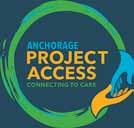

Save those receipts! The IRS determines what qualifies as a qualified medical expense, and if your withdrawal amount doesn’t qualify, you’ll be hit with a tax penalty. keep track of your medical bills, receipts for expenses and other documents so that you can withdraw the exact amount that you spent in order to avoid the penalty and take the money out tax-free. Another thing to keep in mind is that those same expenses you wish to take out from your HSA can’t be taken as an itemized deduction on your taxes that year.

29alaska HealtH care | October 2022
Celebr ating 17 ye ar s of serviCe ! 20 05 2022 Providing life-saving donated specialt y medical and dental care to alaskans with low-income and without health insurance for 17 years “If I hadn’t found APA , I wouldn’t have gotten my surger y or gotten my life back ” APA Patient A .M. “Anchorage Project Access gives people hope when they may have lost hope Sometimes it takes a lot of humility to say, “I need help ” It’s been a real life changer for me personally ” APA Patient Y.C Anchorage Projec t Access 2401 E . 42nd Ave Suite 104 Anchorage , AK 99508 907.743-6600 Anchorageprojec taccess .org To increase access to health care for low-income, uninsured individuals by coordinating a network of committed and compassionate volunteer providers. Pick .Click .Give Celebr ating 17 ye ar s a s al a sk a’ s he alth C ar e safet y net in Part ner shiP with anCh or ag e’ s fine st physicians , surgeons , dentists , advanced practitioners , surger y centers , hospitals , physical therapists , primar y care clinics and allied health professionals providing critically needed donated medical and dental care to Alaskans without access to health care “Wherever the art of Medicine is loved, there is also a love of humanity ” Hipp o crates Continued on pg. 30
How steep are the tax penalties? There’s a 20% tax on any withdrawal amount that is not used toward a qualified medical expense. There is some good news – the IRS has an exception for no additional tax on distributions from an HSA after you become disabled, turn 65, or if you die.
Using your hsa as an investment strategy



One major advantage of the health savings account is that you’re putting money in pre-tax, allowing it to grow tax-free, and then withdrawing it tax-free as long as you have a qualifying medical expense. These tax savings, combined with the investment potential of the account, can add up over the years. One investment strategy for your HSA is to max out the amount you can contribute each year. In 2022, the current limits are $3,650 for self-coverage and $7,300 if you have family coverage.
If your employer matches contributions, take advantage of the match. You do need to account for the employer match, in that it does reduce the amount that you’re able to contribute. Take the amount your employer contributes to your HSA and subtract it from your maximum contribution amount to determine how much you can contribute each year.
keep in mind that HSAs are not subject to required minimum distributions like an IRA or 401(k), so there is not a set amount that you need to take out each year once you hit 72.
It’s always best to talk through your investment strategies with a financial adviser who can look at your entire financial situation and help you to determine the best course of action for your specific needs.
Continued from pg. 29 30 October 2022 | alaska HealtH care
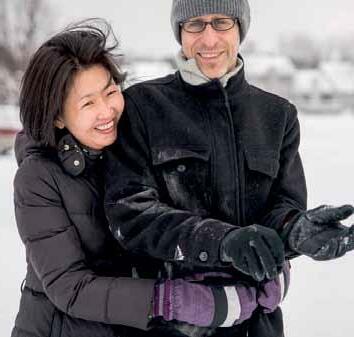


Choo s e the benefits with the bett er e xperience. Alask a, y ou ha v e a choice. Individual | Emplo y er F ind affor dable medical and den t al plans a t modahealth.com Health plans provided by Moda Health Plan, Inc. Individual medical plans provided by Moda Assurance C ompan y D ental plans provided by D elta D ental o f Alaska. D elta D ental is a trademark o f D elta D ental Plans Ass ociation. 0941_ADN (9/22) 31alaska HealtH care | October 2022
HealtH
easy ways to make healthy eating more affordable
 Betty Gold, RealSimple.com, Premium Health News Service
Betty Gold, RealSimple.com, Premium Health News Service
32 October 2022 | alaska
care
waNT TO eaT heaLThIeR aND save MORe MONey? CONTRaRy TO pOpULaR BeLIeF, ThOse TwO ThINGs aReN’T MUTUaLLy exCLUsIve. IT’s pOssIBLe TO MaKe BeTTeR FOOD ChOICes wIThOUT speNDING a FORTUNe; yOU jUsT have TO KNOw wheRe TO LOOK.
First things first. Start by cooking more at home, because it hits two birds with one stone. Home cooked meals are both more nutritious and more affordable than getting takeout or eating in restaurants. And according to Julie Ramhold, a consumer analyst from DealNews, there are several simple steps you can take to eat and buy healthier ingredients when you’re on a budget, too. Here are her top recommendations.
1. sTOCK Up ON CheapeR pROTeIN sOURCes.
In addition to injecting some variety into your diet, cheaper protein sources offer you a chance to be creative with your meals. Yes, boneless, skinless chicken breasts are a healthy option — but if you opt for a whole chicken instead, it’s both cheaper and gives you more cuts to work with. You can turn the breasts into a salad, use the thigh meat for a healthy soup, and throw the drumsticks on the grill.
And if you want more than meat, dried beans and lentils are excellent sources of protein and an easy way to bulk up soups and other dishes without spending more. While you’re at it, make eggs part of your regular grocery list. They’re decently versatile, and not just in choosing between scrambled and fried: they make a great addition to salads, healthy snacks and easy dinners, like omelets, frittatas, huevos rancheros or quiche.
2. BUy heaLThy sTapLes IN BULK.

Warehouse clubs are a great way to stock up on canned goods, dry goods and frozen produce — and having a solid stock of shelf-stable items at home means you’ll always have healthy options on hand. “And if you need to buy healthy grains in bulk, stores like Whole Foods and Earth Fare are great options,” explains Ramhold. “Though other items there might be pricey, their bulk bins tend to be comparably priced.”
Continued on pg. 34
33alaska HealtH care | October 2022
3. MeaL pRep.
Meal planning may seem like one more thing to add to your already-busy schedule, but we promise it makes healthy eating, and eating in general, significantly easier. Start by formulating a menu to turn to during the week — a clear plan of action, shopping list included, makes grocery shopping and cooking at home a lot easier, so you’ll start to rely on fast food and takeout less. Once you’ve gotten into the swing of organizing your meal schedules in advance, you can jump into prepping batches of grains, veggies and protein ahead.

4. shOp aT speCIaLTy FOOD sTORes aND aIsLes.
Many home cooks might think ethnic markets and aisles are just a great place to find ingredients that other stores might not carry, but it goes far beyond that. “Spices can be ridiculously expensive for a small amount, but by buying packages and bottles at specialty food stores, you’ll get way more bang for your buck,” Ramhold says. “They’re also an excellent place to shop for pantry staples in bigger sizes, like rice and beans, and often stock delicious produce at super-affordable prices, like fresh jalapeños, bok choy, cilantro, Thai basil and more for way less.”
Real Simple magazine provides smart, realistic solutions to everyday challenges. Online at www.realsimple.com.
Continued from pg. 33 34 October 2022 | alaska HealtH care










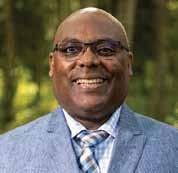






AlAskA OrthOpedic speciAlists previously Alaska hand-elbow-shoulder & rhyneer caylor clinic dr. Michael G. McNamara, M.d. Hand, Elbow, and Shoulder Surger y dr. Mark t. caylor, M.d. General Orthopedics and Hip & Knee Reconstruction dr. Jason r. Gray, M.d. General Orthopedics and Sports Medicine dr. tyler W. smith, M.d Orthopedic Trauma, Fracture Care, & General Orthopedics robert r. thomas, pA-c Physician Assistant Jonathan A. Metzger, pA-c Physician Assistant to schedule an appointment, please call 907-771-3500 4015 Lake Otis Parkway, Ste. 201 Anchorage, AK 99508 • www.akortho.com shoulder | elbow | hand | hip | knee | Ankle | sports Medicine | Fracture care | trauma In Network with Aetna, Blue Cross Blue Shield, Cigna, Moda, Tricare, UnitedHealthcare, and VA. THANK YOU fOr vOTiNg Us BesT Of AlAsKA 2018, 2019, 2020, ANd 2021

36 October 2022 | alaska HealtH care




























 Jill M. Goldstein, Ph.d., harvard health BloG, PreMiuM health news service
Jill M. Goldstein, Ph.d., harvard health BloG, PreMiuM health news service


























 Christine Yu, EatingWell.com, Premium Health News Service
Christine Yu, EatingWell.com, Premium Health News Service














 Stephanie Collier, M.D., MPH, Harvard Health Blog, Premium Health News Service
Stephanie Collier, M.D., MPH, Harvard Health Blog, Premium Health News Service









 Betty Gold, RealSimple.com, Premium Health News Service
Betty Gold, RealSimple.com, Premium Health News Service
















